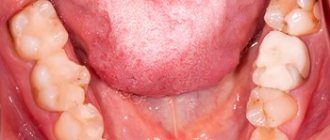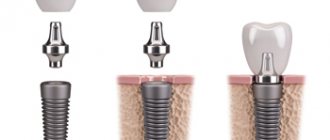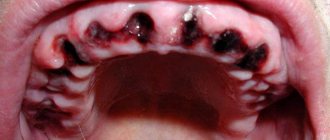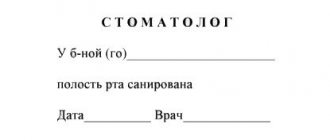Tooth extraction is not a pleasant process. Painful sensations and swelling of the gums after extraction of a tooth are an adequate response of the body to the operation. Usually, unpleasant symptoms increase 3-4 hours after the effect of the anesthetic drug wears off. Normally, pain, swelling, redness of the mucous membrane after a conventional extraction are observed for another 2-3 days; after a complex extraction, symptoms persist for 3-5 days. If your gums hurt after tooth extraction after 7 days or longer, you need a medical examination.
Why does my gum hurt?
Unexpressed aching pain and slight swelling of the gums appear due to injuries to soft tissues, nerves, and jaw bone when removing a tooth from its bed. The gum tissue swells, the nerve endings are compressed, hence the pain. How much your gums hurt after tooth extraction depends on:
- Patient's pain sensitivity;
- degree of complexity of the intervention;
- features of the clinical case;
- location of the dental unit (after extraction of molars, the injury is greater, the pain lasts longer);
- state of immunity.
The body’s normal response from the development of complications is distinguished by the following properties: the pain does not intensify, pathological symptoms are present for no more than 7 days, and no other signs of deterioration in well-being are observed.
Procedure
A dentist discusses gum transplant surgery with a patient.
There are different types of gum grafts available.
There are a variety of gum grafts, and the type of surgery depends on the extent and severity of the damage and the individual's individual needs.
The periodontist will discuss the different types of surgery available with the person to decide which option is most suitable.
Before the gum graft begins, the periodontist will administer a local anesthetic to numb the area so that the procedure is not affected.
They may also remove some of the existing gum to expose the root of the tooth and clean it.
Three different types of gum transplant surgery:
In this procedure, the periodontist:
- removes tissue from the roof of the mouth by making a flap and taking tissue from underneath the top layer
- sews tissue onto existing gum tissue to cover the exposed tooth
- seams flap on the roof of the mouth where they got the fabric from
Free gum vaccinations
This is the preferred method for people with thin gums who require additional tissue to enlarge their gums.
In this procedure, the periodontist:
- removes tissue directly from the top layer of tissue on the roof of the mouth
- stitches this tissue down to the existing gum area
Pedicle (lateral) grafts
This is the preferred method for people who have a lot of gum tissue growing near an exposed tooth.
In this procedure, the periodontist:
- gum graft tissue around or adjacent to the tooth in need of treatment
- only partially cuts off this tissue, supporting one edge
- stretches the tissue over or down to cover the exposed tooth root and hold it in place with stitches
The periodontist can remove tissue from a tissue bank rather than removing rubbery tissue from a person's mouth.
Preparing for gum transplant surgery
Someone must drive the person home after the procedure.
Once you and your dentist have considered all the options and decided on the type of surgery, it is important to ensure that a family member or friend accompanies you.
This is important because pain medications are not safe during gum graft surgery.
People who receive gum vaccinations will be able to return home after the procedure. The doctor will provide all post-operative care instructions to ensure successful healing of the graft.
Recovery
Recovery will help:
- avoid brushing teeth at the treatment site
- use a special mouthwash to reduce plaque buildup
- take antibiotics to reduce the risk of infection
- avoid strenuous exercise
- avoid foods that are difficult to eat
- eating soft, cool foods such as ice cream, pasta, eggs, yogurt, and soft cheese
- avoid smoking
The pain and discomfort a person experiences will vary. For example, if the periodontist uses tissue from a tissue bank, the person will experience minimal pain. If tissue from the roof of the mouth is removed, a person may feel pain for several days.
The healing process is often quick, with 1 to 2 weeks for the mouth to completely heal, but can sometimes take longer. People can take over-the-counter pain relievers or prescription medications to help manage any discomfort.
After the procedure, teeth may become more sensitive than usual, especially to hot and cold foods, and people may benefit from using a desensitizing toothpaste or mouthwash.
Most can return to work the next day.
There will likely be a follow-up appointment with your dentist after surgery to check that the healing process is going well as expected. The dentist may also remove sutures if necessary.
Not only will your gums look different after surgery, but they may become stiffer and harder.
How long does your gum hurt after tooth extraction?
Normally, after 1-3 days, tissue swelling gradually decreases, pain goes away, and health improves. Already on the 3-4th day, the blood clot is gradually replaced by granulate, and after a week it fills the entire hole. After tooth extraction in the upper jaw, the recovery time is identical to the lower jaw, but bone regeneration in the upper dentition occurs more slowly.
In some clinical cases, the surgeon may cut the gum and drill out the jaw bone. Typically, such manipulations accompany the extraction of the outer eighth molars (wisdom teeth). Then healing takes longer than after a simple operation.
If 5-7 days after the intervention the pain does not decrease, but rather becomes more intense, you should consult a doctor. Acute, nagging, constant pain after tooth extraction can be a symptom of complications.
The tooth socket heals in approximately 2-4 weeks. Recovery time depends on the parameters of the wound and the body’s reaction to the removal procedure. Bone volume is restored approximately 6 months after the intervention.
How gums heal
After surgery, connections between tissues and cells are disrupted. The healing process is the formation of new physiological and anatomical connections between them.
Healing includes:
- Formation of a blood clot - forms within 5-10 minutes after surgery and serves as a protective barrier against infection and harmful microbes.
- Formation of granulation tissue - within 3-4 hours the production of granulation tissue (young connective tissue) begins.
- Epithelization and collagen formation lasts up to 7–10 days and is sometimes accompanied by slight itching.
- Regeneration and maturation - the wound “heals” after 2–3 weeks, but complete healing of the fibers requires several months.
Gum healing
What happens if you ignore pathological pain
The appearance of pain always signals a problem in the body. If the tooth was removed long ago, and the pain persists or increases, this is evidence of a complication. Pain may be associated with:
- Increased body temperature;
- severe swelling, redness of the mucous membrane;
- halitosis;
- purulent discharge from the socket;
- white or gray coating on the mucous membrane;
- enlargement of the submandibular lymph nodes;
- pain while swallowing;
- restriction when opening the mouth.
In this situation, you should see a doctor immediately.
Ignoring alarming symptoms is fraught with serious problems, such as abscess and osteomyelitis. These are serious pathologies that require timely, qualified treatment.
Are there any complications?
Complications from gum graft surgery are minimal and uncommon.
However, it is possible that people may experience the following:
- bleeding gums
- swollen gums
- the teeth seem to wobble (although this should only be temporary)
- too sensitive teeth
- gaps between teeth
- infection
Sometimes the graft tissue may not attach properly to the graft site. This is very rare, but if it occurs, further surgery may be required.
Some people don't like the way their smile looks after surgery. In these situations, the periodontist can reshape the gums to help change the way they look.
How to get rid of pain at home
To eliminate postoperative pain, the dentist will prescribe analgesics and cold compresses on the side of the intervention. Additionally, you can use traditional methods - mouth baths made from tinctures or herbal decoctions. Baths with an antiseptic drug are also allowed (the solution must be held in the mouth for a while and spat out). What is strictly forbidden:
- warm the operated area;
- rinse your mouth intensively (you can wash out the blood clot);
- chew on the injured side;
- “check” the hole using your tongue, fingers, and apply medicine to it.
The risk of complications depends on the complexity of the operation to remove a dental unit. Simple extraction is carried out if the tooth does not have strong, intertwined roots, it is intact, and there are no associated problems (cysts, pulpitis, periodontitis, etc.).
Extraction of dystopic teeth, which are very crooked, have intertwined, crooked roots, with a destroyed coronal part, and with an inflammatory process, is considered difficult. In such cases, a more extensive operation may be necessary with a preliminary incision in the gum, sawing the tooth into elements, extracting fragments through a hole in the jaw bone, and applying sutures. Molars are usually difficult to remove. If your gums hurt for several days after the removal of a molar, but the painful symptoms are smoothed out, then the wound is healing normally.
What to do after the procedure
General recommendations:
- when you arrive home, you just need to lie down and relax;
- you cannot eat or drink for 3 hours;
- for 3 days after surgery, you should not open your mouth too wide, or eat hard or hot foods;
- limit emotional and physical stress;
- hot baths, visiting the sauna, and exercising in the gym are prohibited;
- It is advisable to completely stop smoking and drinking alcohol for a week.
Remember: under no circumstances should you apply hot compresses or burn the wound with alcohol, iodine or brilliant green. It will only get worse!
A dental surgeon can prescribe applications of wound healing and antimicrobial ointments (Cholisal, Solcoseryl, Stomatofit, etc.). To strengthen general immunity, you can take immunomodulating agents and multivitamin complexes.
What complications can tooth extraction lead to?
Normally, restoration of injured tissue occurs within three weeks. The red, inflamed gum gradually acquires a pale pink color and ceases to be painful on palpation. But if a person has diseases that prevent rapid recovery, or he does not comply with doctor’s orders, then the rehabilitation process can be difficult. Then the patient will face complications, including:
- hematoma;
- severe swelling of the soft tissues of the cheek;
- frequent bleeding from the wound;
- numbness of the tongue, cheeks, lips;
- pain while eating.
If the healing of the hole is in doubt - a person thinks that something is going wrong - he should immediately consult a doctor. The doctor will conduct an examination and tell you whether you need to use any drugs to speed up regeneration.
What to consider when deciding on a transplant?
A person deciding whether to undergo gum transplant surgery should consider the following:
- Alternative Treatments : This may include tooth extraction if gum recession is already severe.
- Cost of surgery : If a person is considering surgery for cosmetic reasons only, they will likely have to cover the cost of the surgery out of pocket.
- Risks associated with untreated : Untreated gum recession can lead to severe gum disease and possible tooth loss. Gum disease can also cause additional problems such as heart disease and diabetes.
By maintaining good oral hygiene and visiting your dentist regularly for regular checkups, you can reduce your risk of developing gum disease and catch it early if it begins to develop.
Gum healing time
Conventionally, dentists divide the regeneration process into two stages - partial, complete. Partial epithelization is said to occur in the first 12 days after tearing out, and complete epithelialization occurs after 20-25 days. But with complex removal, leading to significant damage to bone tissue and muscles, the recovery period may increase by several more days.
Among the most common reasons causing slow epithelization:
- significant trauma to bone tissue and gums during the intervention (especially if the bone around the diseased tooth was cut out with a drill);
- the occurrence of alveolitis of the inflamed socket;
- damage to the protective clot or its unformation (“dry” hole);
- incomplete removal of bone fragments due to the doctor’s carelessness;
- mobility of the mucous membranes, which needed to be sutured, but for some reason the surgeon decided not to suture;
- refusal to use antibiotics during a severe recovery period;
- diabetes;
- reduced immunity.
Why does the hole take a long time to heal?
Epithelization of the gums after the operation begins after a couple of days, and a white coating appears on it. Now it doesn’t hurt so much anymore, and there are no signs of inflammation. At this time, it is better not to touch the mucous membrane, but just continue to properly take care of the hole. It may not heal for a long time due to the patient’s personal quirks, at a time when there are diseases of the circulatory system or chronic inflammatory processes in the body.
If your gums hurt very badly after seven days, this is possible:
- Dry socket or alveolitis - this complication often appears when the rules for organ removal are not followed, while part of the crown or root remains in the socket. Under such conditions, the blood clot, which should protect against infection, falls out. This complication much more often begins on the 5th day after the end of the operation. Common symptoms are gum discoloration, unpleasant odor, halitosis, soreness, slight bleeding;
- Chronic bleeding - this complication is observed in people with hypertension and in the case of blood diseases. This may result in alveolitis. Before sending the patient home, the dentist stops the bleeding and places a hemostatic sponge on the hole;
- A fracture or dislocation of the lower jaw is a rare complication that occurs more often during the removal of a wisdom tooth; the risk increases if there is a cystic formation or acute inflammatory process in the root area;
- Perforation of the maxillary sinus is possible as a result of complex removal of chewing teeth in the upper jaw.
If the hole hurts for a long time, and it does not go away after seven days, you should immediately consult a doctor. It is forbidden to cope with complications that appeared during the removal on your own. Apart from this, there is no way to prevent them, so first aid is provided immediately after the procedure is completed.
Complications due to improper care, which slow down gum healing, can be prevented on your own.










